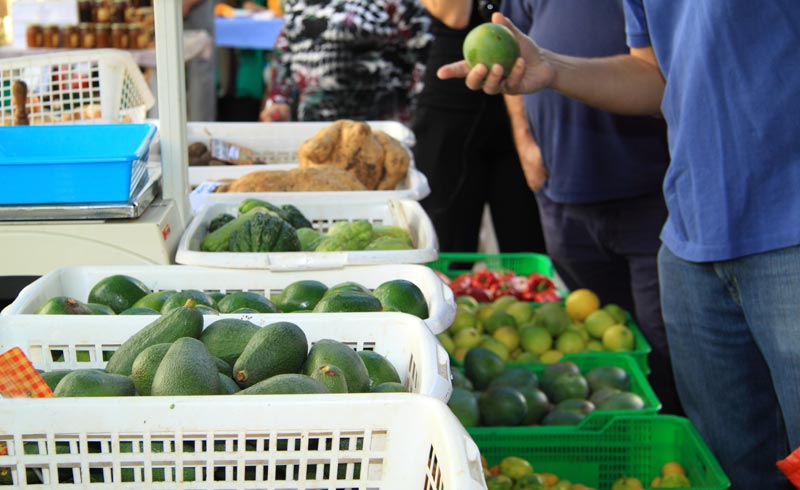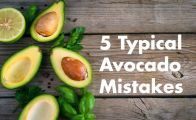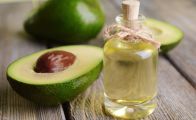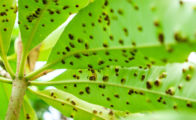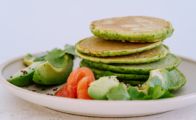Unless you buy pre-packaged “ripe and ready-to-eat” avocados, the chances are you may have to choose between a heap of loose avocados, either from your tree or from a supermarket shelf. Some might be green, some ripe, some overripe and some bruised by vigorous handling.
Selecting Avocados
A ripe avocado that is ready to eat should be slightly soft, but with no visible dark, sunken spots or cracks. Don’t base your decision on the color of the avocado though, because some types remain green even if they are ripe. Only the skin of the Hass avocado can change to anything from dark green to purple and even black when it is ripe.
Do not poke your fingers into an avocado in an attempt to establish whether it is ripe. It will only cause bruising, spoiling the fruit. Rather cup the entire fruit in your hand and press gently to feel if it gives way under pressure. A ripe avocado will yield slightly, without feeling mushy. Never use only the neck of the avocado near the stem as an indicator of ripeness. This area often becomes soft before the body of the avocado is ripe.
The stem of an avocado, if still attached, is also helpful to determine whether an avocado is ripe or not. Pull on the stem and take it off if there’s no resistance. If the small circle under the stem is brown, the avocado is mostly likely overripe. A yellow-green color means it’s not ready to be eaten, but a bright green color means it’s probably perfectly ripe.
Finally, look for avocados with longer necks instead of rounded tops. This could be an indication that they spent a longer time on the tree, contributing to the development of a richer flavor.
Ripening Avocados At Home
To ensure a steady supply of ripe avocados at home, use different methods to ripen them in stages.
Avocados naturally ripen at room temperature. Do not refrigerate them unless they are ripe and then only for a period of one week or less.
Place avocados in a fruit bowl with other fruit, especially bananas, to accelerate the ripening process. Or speed the process up further by placing the avocado in a brown paper bag or wrapping it in newspaper for a day or two. You can even put a banana with the avocado in the bag as an added booster. The reason is that bananas give off ethylene gas. This method will also speed up the ripening of the banana.
Storing Uneaten Avocado Halves
Once an avocado has been cut open, it is best to eat the entire fruit as soon as possible. If you however must store one halve, do not remove the pip. Drizzle some lemon juice over the flesh to prevent it from turning brown, wrap it in plastic film and store in the fridge. Consume within a few days, remembering that it will taste best if allowed to return to room temperature before eaten.

